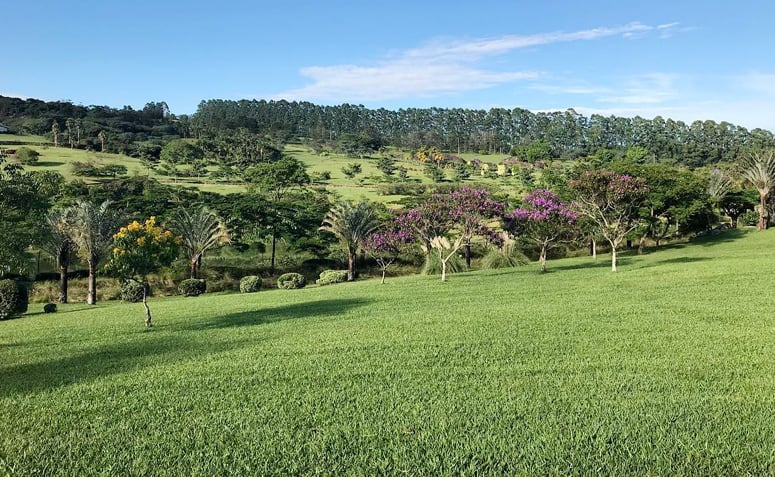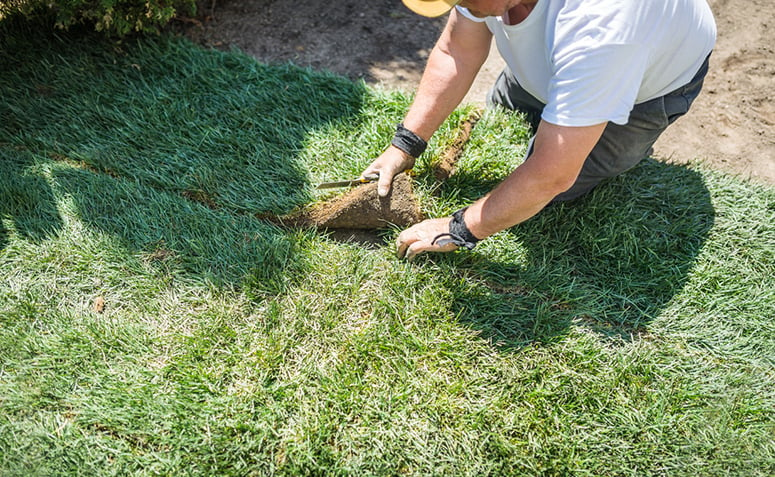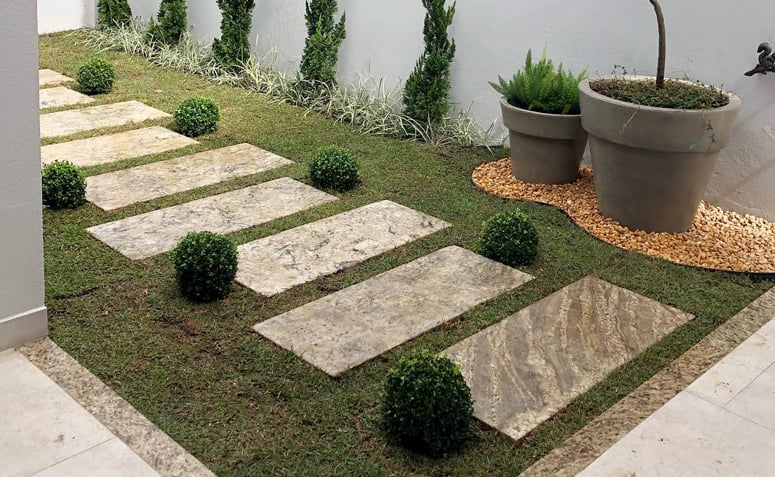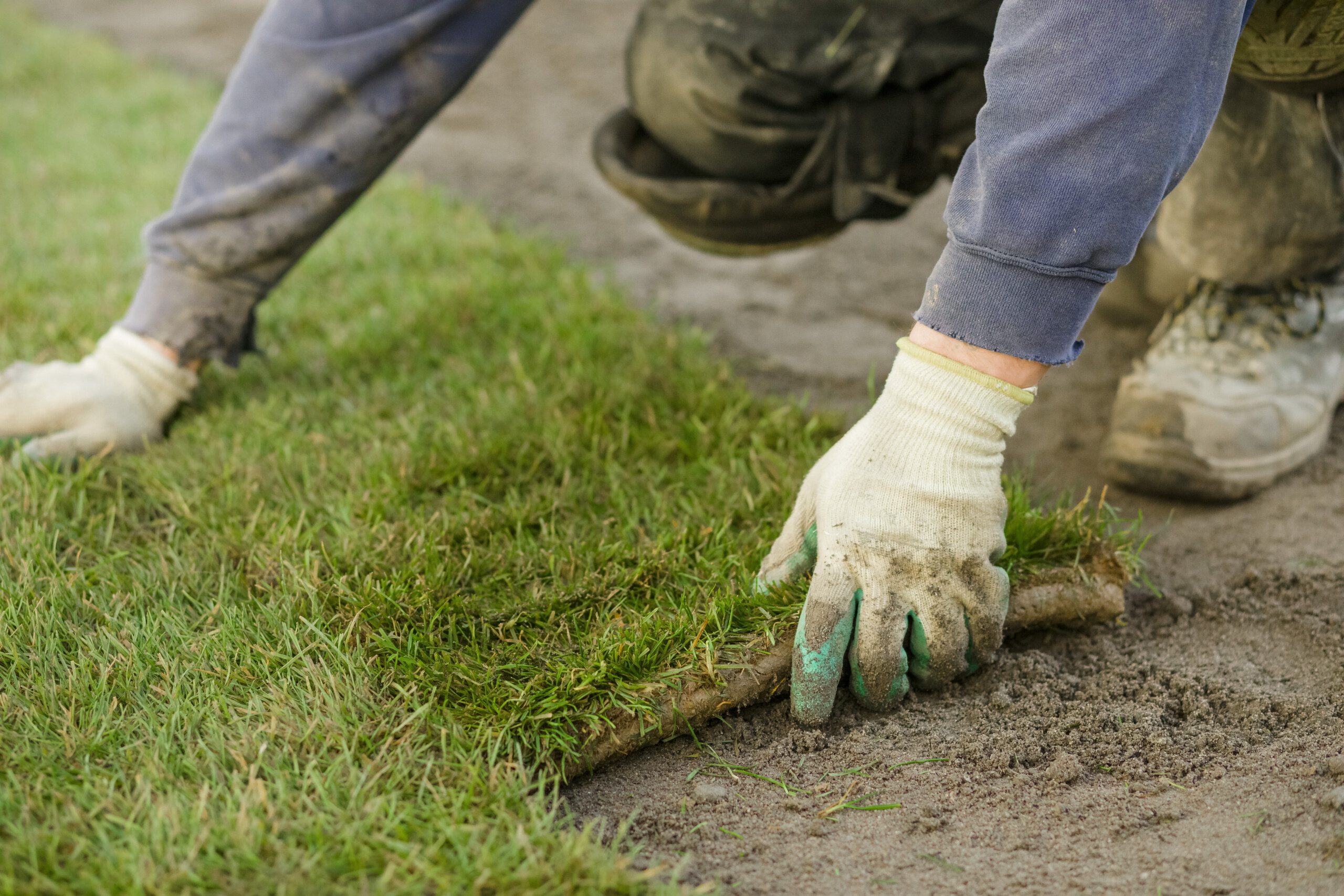Table of contents
Having a beautiful garden is a dream of anyone who has an outdoor area at home. And to start shaping your garden it is important to have a good foundation. The grass appears as the background to then start inserting and harmonizing with the flowers and shrubs.
See_also: 22 LED headboard ideas to make your room look beautifulThere are several types of grass and different ways to plant and grow them. According to Bruna Gasparotto, owner of the company Flor de Quê, the important thing is to know the space where you want to plant and thus choose which type best fits the location.purpose, incidence of sun, rain, and soil type, for example," clarifies Bruna.
Types of Grass

The most commonly used types of grass are emerald grass, St. Augustine grass, and St. Charles or Curitiba grass. Each one has a different peculiarity and adapts better to certain locations. Knowing each one makes it easier to decide which grass is ideal for your garden.
- Emerald grass: This type of grass is most often used in sports fields and playgrounds because it adapts best to sunny locations. "Emerald grass ( Zoysia japonica ), which has narrow, pointed, small leaves and an intense green color (hence its popular name), is widely used for sports fields, playgrounds, condominiums, and planted in sunny locations." explains the agronomist.
- St. Augustine grass or English grass: this grass adapts better to environments with little sun and higher temperatures, as Bruna explains, "St. Augustine or English grass ( Stenotaphrum secundatum ), has medium to large leaves, smooth and hairless, and dark green in color. It is widely used in residential beach gardens, because it does not need full sun and does not tolerate very cold temperatures.
- São Carlos or Curitibana grass: this is the most popular grass for gardens because it adapts to sunny and shady environments, as the master in Agroecology specifies. "The São Carlos or Curitibana grass ( Axonopus compressus ) has large, smooth, hairless leaves with a vibrant green color, and can be grown in full sun or shade. Due to its resistance to cold temperatures and pests, it is widely used in residential landscaping.
To choose the type of grass that will look best in your yard, it is important to analyze the climate, the temperature, and the incidence of sunlight in the desired location to start your garden.
How to plant grass: step by step

To plant the grass, first you must choose between planting from seed or in slabs. Planting from seed is cheaper, but also more time-consuming.
According to Bruna, the use of slabs is the fastest and most efficient way. "Slabs are grasses that are pre-cultivated in an environment with optimal conditions for the grass to grow strong and uniform. They are cut into slabs, usually 50 cm x 50 cm and can be placed directly on the planting area", she explains.
1. measure the required area
The first thing to know is the size of the space where you will plant the grass, so you will be able to precisely identify the amount of grass that will be used, so the engineer explains that "the first step is to know how much grass is needed in the area by measuring.
See_also: Crochet Beak: 70 patterns and 10 step-by-step tutorials2. choose the type of grass
To define the type of grass, it is necessary to know the place and understand the climatic factors, and also to know what purpose it will have, as Bruna explains: "for this, one must know its purpose (field, landscaping, farm), incidence of sun, rain, and type of soil, for example.
3. prepare the soil
To prepare the soil, remove substances that may interfere with planting, such as weeds, stones and rubble. In addition, the master in agroecology points out leveling and correct fertilization as important parts of the process. "The third step is the preparation of the soil to receive the grass, such as leveling and necessary fertilization".
4. planting the grass
Finally, it is time to actually do the planting. The grass slabs must be lined up side by side so that they root and grow evenly. Bruna also stresses the importance of irrigation: "Right after planting, it is necessary to irrigate the planted grass area well", this way the grass will settle in the soil and grow nice and green.
Planting grass is not such a difficult task, but it is necessary to pay attention to the details of each step because one depends on the other. The success of your green garden depends on the attention you give to each planting step.
5 tips for your lawn to stay green

Once you have planted the grass, don't think that the job is over. To have a beautiful garden you must take care that the grass grows beautiful and healthy.
- Take care of irrigation: Grass needs water to be able to grow healthy and green. Irrigation must be done whenever the soil is low in humidity or when the leaves change color. "Irrigation periodically, especially in times of drier and warmer weather," explains Bruna.
- You can regularly: According to the agronomist, pruning should be done when the grass grows more than 5 cm tall.
- Fertilize the area: Fertilizing is a care that should start only after the grass has stabilized. Bruna points out that fertilizing should be done with organic matter and that this way the grass will always remain beautiful.
- Pest and weed control: It is important to always observe if there is the presence of weeds or insects in the lawn. For the removal of these intruders, the engineer stresses the importance of professional monitoring: "Observe if the lawn has the presence of insects and other plants (called weeds), so that they can be removed from the site".
- Avoid stepping on the grass: Finally, avoid walking on the grass, so it will grow evenly and look beautiful.
Planting grass requires care and attention, the important thing is to follow all the tips and always pay attention to whether it is growing beautifully and without any problems. And whenever you have any doubts, contacting a professional is always the best way out.



